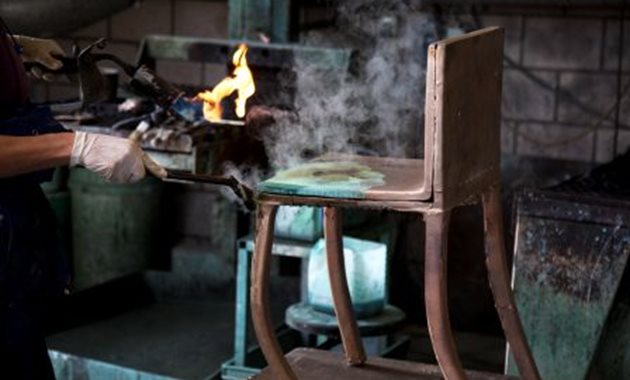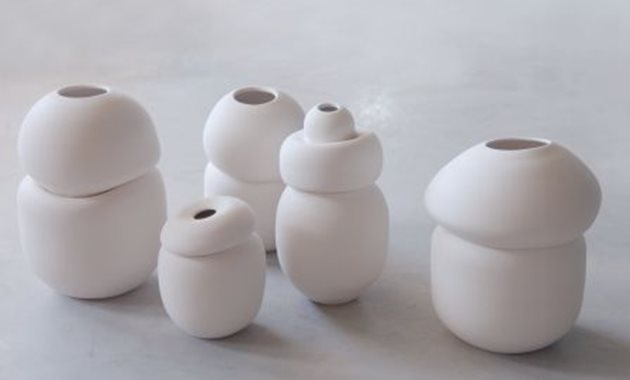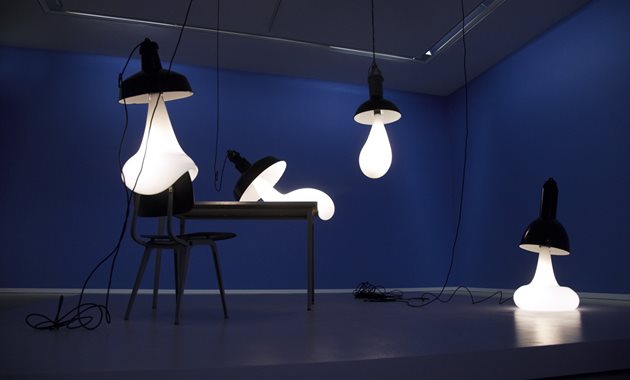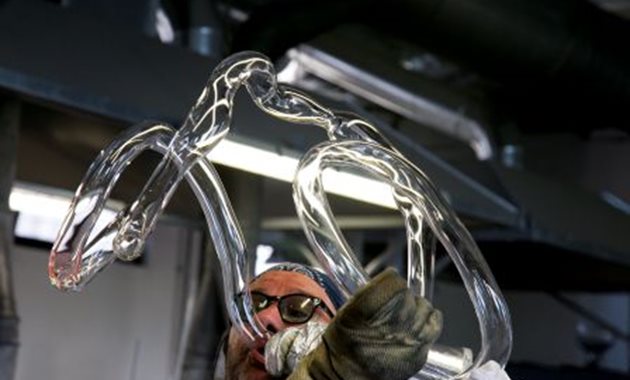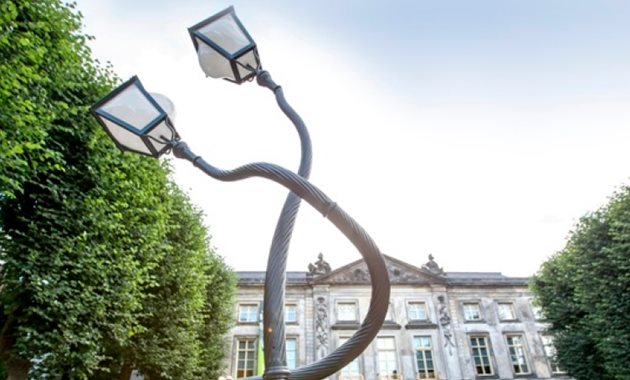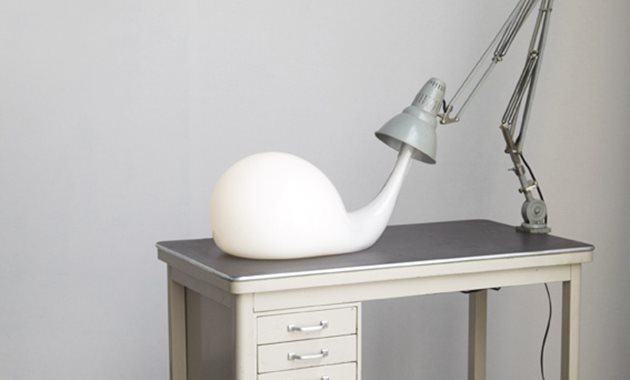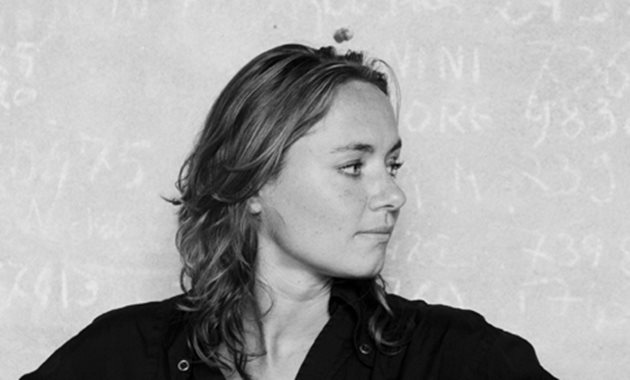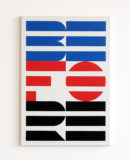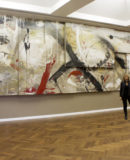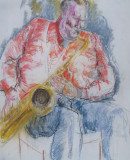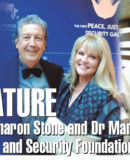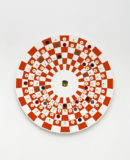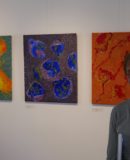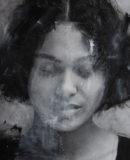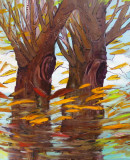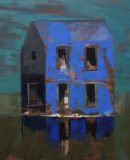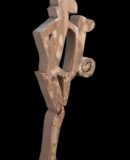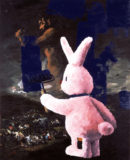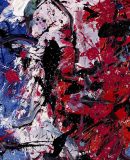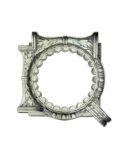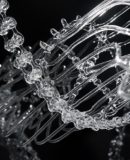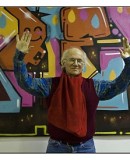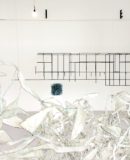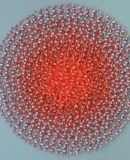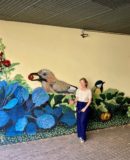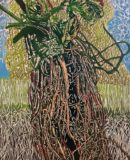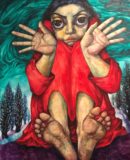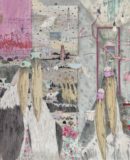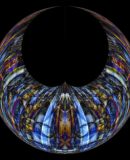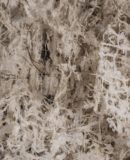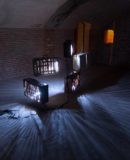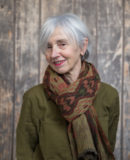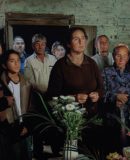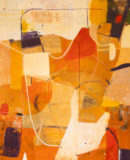World Artists and their Story - 3, Pieke Bergmans
World Artists and their Story – 3, Pieke Bergmans
Now on show in the Noordbrabants Museum in Den Bosch is a retrospective of the work of Pieke Bergmans, titled Freeze. Bergmans is a designer who is quite to the limelight. She uses many kinds of materials. What does the material want? Each material is given the right to speak for itself.
Designing is in the genes of Pieke Bergmans. Her grandfather designed already, shoes, her father does too and involves modern art in the designprocess, her mother is an artist, her brother is in the company of her father and is engaged there in the artistic innovation. Only her sister is not directly artistically concerned, but indirect she is. She is working on setting up a design agency in Beijing – China. ‘As far as content I sit right between my father and my mother’, says Pieke. ‘My father is an industrial designer, starts with the possibilities of the material, and my mother takes all the freedom making drawings and paintings.’
Listening to the material
Pieke Bergmans is fascinated by the shapes created by movement. It surprised her that many materials are pushed in a straitjacket with no room for the natural properties of the material. Characteristic of Bergmans’ way of working is a careful study of a production processes and next a manipulation and designing of it. Here she gives the material the chance to choose its own path.
In glass factories, carpentry workshops and potteries Bergmans works with master craftsmen. She also works sometimes in the midst of advanced industrial proccesses. She makes herself familiar with the production process, following the steps from raw material to products. She doesn’t have a preconceived idea of what the finished product should be. Instead, she focusses on he growing tension in the material. The material is given the right to speak for itself and Bergmans listens.
Cool down
Under her direction several works are produced in series. At some point in the production Bergmans intervenes bringing the still free-flowing shape to a standstill. Each object is therefore unique. The result is a “frozen” time. “Free” has become “Freeze”.
Bergmans does not limit herself to one kind of material, but does include glass, clay, metal and plastic. Materials that get soft and deformable by heating during the production process. During cooling, they get hard and the process of crawling, writhing and flowing is halted.
For Bergmans trial and final object are inseparable. Once she intervenes, there is no way back for the object. By continuous repetition of the process each series evolves anyway. ‘It’s just like in nature. Nature uses a formula whereby every copy is unique.’ Exactly as it is in the work of Pieke Bergmans.
Philip Starck
Bergmans: ‘This retrospective forced me to reflect on the theme in my work. I am trained as a designer in the industry that makes something perfext, the ‘Golden Ratio’. I wanted to get rid of that. I am responding to society. I study production processes and try to bring out the beauty that is inherent in all material.’
When I studied, Philip Starck, – the man who gave a special form to everyday things like a toothbrush or a toilet brush – was a celibrity. What he did was revolutionary. Now you can go to IKEA. You can buy design there too. I missed concentration, attention and poetry. In the process I began to pay more attention to how things are made. Instead designing for the mass industry I rather got the need to work in a much more ‘autonomous’ way. With more attention to wonder than functionality. But I kept reflecting on the product. A ‘lamp’ is a ‘light installation’.
The Crystal Virus
Asked about her key work, the work that put her on a new track, she says: ‘That’s the Crystal Virus, a virus of crystal glass. I had visited the glass factory Royal Leerdam Crystal. I saw a glassblower at work with a bulb smoldering hot glass. The bulb kept changing shape. When the shape had the correct size, it was blown in a mold. Eventually the bulb became a neat straight vase.
I saw nothing back from the wonderful beauty of the glass itself. I was totally disappointed. Everything was forced back into a shape that the glass itself didn’t want and thus its beauty disappeared within seconds. I decided the give the glass more freedom. Get rid of the mold! The smoldering glass bulb might grow and take its own forms. Thus the Crystal Virus arose. Glass bulbs of glass being blown over tables and chairs. The glass found its shape. This principle evolved in all kinds of new series. Like a virus, it spread all over the world.’
Another project resulted from this: the ‘Light Bulbs’. Oversized ‘light-pears’. Here also Bergmans directed the process and challenged glassblowers to blow out of flowing pears. The result was extraordinary. In this way she gave the bulb of a table lamp room to grow. The light objects were equipped with Led. The bulb that had taken on astronomical sizes and shapes got a new name: the “Light Blubs”.
Vapor
Bergmans made another light installation. It is the latest design “Vapor”. For this she used an extrude / blowing machine. In such a machine the liquid plastic is pressed to the outside. At the same time, it is also inflated. The technique was applied differently. ‘I have long practised and at one point, I had it. The most wonderful shapes arose.’ Great light sculptures that move along with every breath of wind.
Aditionally Bergmans made water carafes. The glassblower received instructions when to push and pull to the hot glass. The resulting flowing lines let these glass decanters seem almost liquid. It is not always clear where the water ends and the glass begins.
‘Designer of the year’ in Brazil
Bergmans was named Designer of the Year 2013 – 2014 in Brazil. ‘In 2013 things came up to me from Brazil. I loved it. I was invited for a solo exhibition at the Design Fair in Sao Paulo. It came in the magazines and the press. I think Brazil is a super inspiring country.’
The anthropologist professor Mattijs van de Port has an explanation for this. ‘A lot of Euro-American design strives for perfection. By contrast Brazilians tend to cultivate the ”aesthetics of imperfection”. See the Bossa Nova style. Its beauty is in the hesitant rhythm, the not that perfect performance techniques and the vocals which are a little off beat. Brazilians tend to regard perfection as a not desired endpoint. If you cultivate the imperfect, you open yourself to the infinite abundance. Even beyond the imagination of the artist, in this case Bergmans.’
Pieke Bergmans (1978, Sprang-Capelle), studied graphic design at St. Joost in Breda, industrial design at the Design Academy Eindhoven, 3D design at ArtEZ in Arnhem and Design Products at the Royal College of Arts in London. ‘I did my first year in Breda, graduated in Arnhem and then did my Masters in London. I found it interesting to deviate from the standard. It turned out to be very well for my own development. I was and am open for everything and everyone.’
Stillness
After her studies Bergmans opened a studio in Amsterdam and Milan. She also has a workplace in Tilburg. Bergmans presents her work both nationally and internationally. Her designs are included in several museum and private collections.
Her philospophy: ‘In a world that revoves around money, speed, machinery and large industries, there is little room for poetry, for questions, time and wonder. Despite all the buzz around us, of which I am part, I strive for attention, imagination, autonomy. I try to give people a chance to have a good look at things and experience the beauty of it.’
Aziz Bekkauoi, fashion designer: ‘Pieke Bergmans creates an existential lightness that is not transferable, but rather poetic. It is a surrealism that immediately comes across familiar. It feels very interactive inviting, suitable for our world.’
http://www.hetnoordbrabantsmuseum.nl/nu-in-het-museum/tentoonstellingen/2014/freeze/
http://ifthenisnow.nl/nl/verhalen/world-artists-and-their-story-3-pieke-bergmans
Disclaimer: The views, opinions and positions expressed within this guest article are those of the author Walter van Teeffelen alone and do not represent those of the Marbella Marbella website. The accuracy, completeness and validity of any statements made within this article are not guaranteed. We accept no liability for any errors, omissions or representations. The copyright of this content belongs to Walter van Teeffelen and any liability with regards to infringement of intellectual property rights remains with the author.

